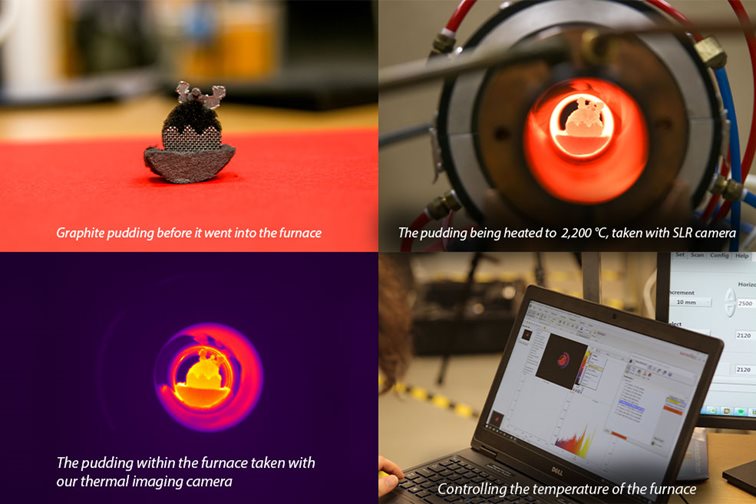NPL heated a Christmas pudding to 2,200 °C
How did we make and heat it?
NPL's temperature experts created a Christmas pudding, complete with sprigs of holly, from various forms of graphite. The pudding was placed in our high-temperature furnace and heated to 2,200 °C, (or 2,473 K, where K is kelvin, the SI unit of temperature). When the pudding was heated, its parts glowed with differing levels of brightness due to the contrasting emissivity of each form of graphite used. We then took pictures with a standard SLR camera and a thermal imager.

Why does NPL have a high temperature furnace, and what is it used for?
NPL’s temperature and humidity team uses the high temperature furnace to calibrate non-contact thermometers and thermal imagers, from around 1000 °C to about 3000 °C, to the international temperature scale of 1990 (the ITS-90). It is also used to compare temperature calibration capability with other national measurement institutes around the world.
In the future, the furnace will be used with high temperature fixed-point cells to realise the kelvin with very low uncertainties, from around 1000 °C and above, and then disseminate it to accredited calibration laboratories and other users.
Find out more about the kelvin
More about our Temperature and Humidity team’s research
What is graphite?
You probably have some graphite at home as it is what is commonly known as ’pencil lead’. However, graphite is not lead at all, it is a form of carbon. Graphite is a good conductor of heat and electricity and has an incredibly high melting (sublimation) temperature of around 3,700 °C. A layer of graphite one atom thick is called graphene which has some incredible properties that NPL exploits.
More about NPL’s work on Graphene
Why is measuring temperature so important today?
Reliable temperature measurement is required in areas as diverse as healthcare, manufacturing, meteorology, defence and energy production, and is a key indicator of climate change across the world. In fact, temperature measurement touches on most areas of human endeavour in a modern society.
More about how and why we measure the temperature of the earth here